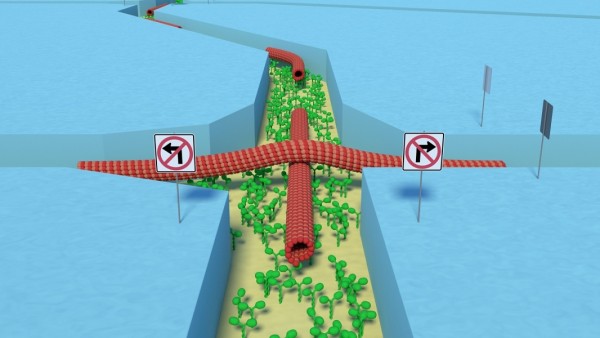By Ana Verayo, | February 28, 2016

Biological supercomputers use less energy that area bout the size of a book.
Scientists have now developed a new model of a "biological" supercomputer that can solve the most complex mathematical problems by just requiring the most minimal amount of energy.
Researchers from the McGill University have now designed a supercomputer that is a fraction of a size of a regular supercomputer. Even if there are already breakthrough technologies, computers can still become limited to solving one problem at a time.
Like Us on Facebook
According to McGill's Department of Bioengineering chair, Dan Nicolau, when it comes to bigger problems, there is a need for a bigger computer as well. This is the reason why supercomputers are inside massive rooms that often require their own power plant to function.
Now, a team of international researchers from the U.K., Canada, Germany, Sweden and the Netherlands developed this new model biocomputer, that is not only energy efficient but can carry out multiple calculations at a single time, that comes in a size of a book.
According to co-author of the study, Heiner Linke, who is the director of nanoscience in Lund University, Sweden, this new biocomputer only requires less than one percent of energy that an electronic transistor needs to complete one calculation step.
The core of this model involves a 1.5 square centimeter microchip that utilizes myosin which are molecular motors that can conduct mechanical tasks via living cells, moving protein filaments within artificial pathways.
For a traditional computer, electrons travel through a chip as they are propelled via an electric charge. However, for the biocomputer, proteins made out of short strings are powered by a biochemical known as Adenosine triphosphate, which supplies energy to human cells.
Prior studies have shown how parallel computing can be used for complex problem solving such as DNA computing and quantum computing that also use a similar approach. Although, researchers also say that these approaches have not yet been proven to be scalable and even a practical form in a commercial and operational perspective.
Nicolau adds that since there is a new model for the biocomputer, others will follow up and try other biological agents to improve the system. The current model is not yet perfect but researchers believe that it could yield vast potential. Nicolau and the team believes that a hybrid device of biocomputer with a traditional computer can deal with larger and more complex problems.
This new study is published in the journal, Proceedings of the National Academy of Sciences.
-
Use of Coronavirus Pandemic Drones Raises Privacy Concerns: Drones Spread Fear, Local Officials Say

-
Coronavirus Hampers The Delivery Of Lockheed Martin F-35 Stealth Fighters For 2020

-
Instagram Speeds Up Plans to Add Account Memorialization Feature Due to COVID-19 Deaths

-
NASA: Perseverance Plans to Bring 'Mars Rock' to Earth in 2031

-
600 Dead And 3,000 In The Hospital as Iranians Believed Drinking High-Concentrations of Alcohol Can Cure The Coronavirus

-
600 Dead And 3,000 In The Hospital as Iranians Believed Drinking High-Concentrations of Alcohol Can Cure The Coronavirus

-
COVID-19: Doctors, Nurses Use Virtual Reality to Learn New Skills in Treating Coronavirus Patients







